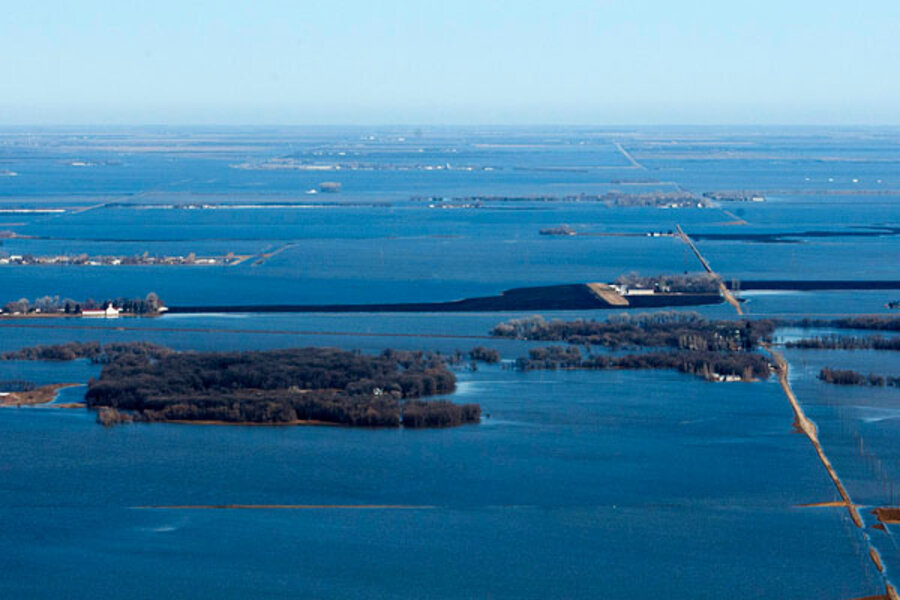Fargo braces for record floods, again. Why this time could be better.
Loading...
| Chicago
Starting this week, communities along the Red River are returning to something they know too well: preparing for a rising tide.
The National Weather Service announced Thursday that a late-winter snow is creating a 50 percent chance of river levels rising as high as 38 feet in Fargo, N.D., and Moorhead, Minn., which would make it the fifth-highest crest on record – just shy of the 41 feet reached during the record flood of 2009. There's a 10 percent chance the river levels break that record, according to the forecast.
Officials in both cities have launched sandbagging and other preparatory measures to keep river waters from impacting homes and businesses. But the efforts highlight how both communities are better prepared than they were four years ago, when sandbagging was so intense that it required around-the-clock help from local high school and college students, who were released from schools to help.
This time, only 1.3 million sandbags are needed, which is less than half the 3 million used in 2009.
The improved outlook comes from both communities' efforts to remove most homes and other structures from low-lying areas and from investing millions to build levees and other protections.
Moorhead has spent more than $88 million, leaving just seven homes vulnerable to a 38-foot crest. In 2009, 160 homes were affected.
The city says it plans to use 400,000 remaining filled sandbags from a 2011 flood. Moorhead City Manager Michael Redlinger said that should be sufficient. In 2009, the city used about 2.5 million sandbags as protection.
“It’s just a really different condition now as we look to the future. It's going to be a real good situation for us. It's good for the rest of the community: lights on for business, lights on for higher education and the K-12 system,” he said.
Fargo, which has spent $100 million since the 2009 flood, is more at risk because more properties remain in low-lying areas. The immediate need is for more than 1 million sandbags. The city reports it has 750,000 bags already filled and is recruiting volunteers to help fill an additional 500,000 bags. The city is also recommending that all residents obtain flood insurance this spring.
“I know it’s getting old. Extremely old for everybody,” Fargo Mayor Dennis Walaker told the Associated Press.
Mayor Walaker and others are urging Congress to help fund a $1.8 billion diversion channel around the area of both cities, saying such a project presents the greatest protection against what appears to be consistent flooding each spring.
The Fargo-Moorhead area has faced two more floods since 2009: the river crested at 36.99 feet in 2010 and 38.75 feet in 2011.
“The only solution to this process is very simple. A diversion has to go through,” Walaker said.
Downstream residents have protested the diversion, saying it will flood homes and farmland in rural areas.
The National Weather Service is uncertain when the river will rise. Below-normal temperatures will suspend any chance of flooding for weeks, but if temperatures get more moderate and trigger a fast melt, and spring rains are heavy, the river could arrive soon.
The National Weather Service says deep snow is holding about 6 inches of rain in the Red River Valley area, while some areas of northern Minnesota are holding the equivalent of 8 inches of water. If a brief refreeze followed warming temperatures, melting would proceed at a much slower rate, reducing flooding, the agency said, although it is too soon to predict which scenario is likely.








